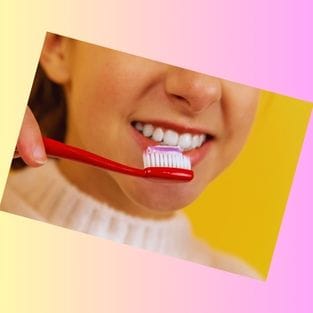Key Takeaways:
- Understand the different methods of teeth whitening and their effectiveness.
- Learn about the potential risks and how to minimize them.
- Discover maintenance tips to prolong your whitening results.
Teeth whitening has become a cornerstone of cosmetic dentistry, offering a beacon of hope for those looking to brighten their smiles.
Whether it's due to coffee stains, natural aging, or genetic factors, achieving that magazine-cover smile is a common goal.
This comprehensive guide will walk you through everything you need to know about teeth whitening, from the basics to maintenance, ensuring you can make informed decisions about your dental health.
What is Teeth Whitening?
Teeth whitening is a cosmetic dental procedure aimed at lightening the natural color of your teeth without removing any of the tooth surfaces. It can significantly enhance the brightness of your teeth, but it's not a one-size-fits-all solution.
The process involves using bleaching agents, typically hydrogen peroxide or carbamide peroxide, to break stains into smaller pieces, making the color less concentrated and your teeth brighter.
Professional vs. At-Home Whitening
When considering teeth whitening, you have two main avenues:
- professional treatments in a dental office or
- at-home products.
Professional whitening, performed by a dentist, uses higher concentrations of bleaching agents and often includes additional technologies like lasers to boost effectiveness. This method can provide dramatic results in a single session.

At-home options, such as whitening strips, gels, or toothpastes, are more affordable and convenient but require consistent application and offer more gradual results.
The Science Behind Whitening Agents
The effectiveness of teeth whitening revolves around the chemistry of the bleaching agents used.
Hydrogen peroxide, the most common agent, penetrates the porous enamel to reach the discolored molecules inside your teeth. The oxygen molecules from the hydrogen peroxide react with the discolored molecules, breaking the bonds that hold them together, which lightens the overall color of the teeth.
Sensitivity and Other Risks
A common side effect of teeth whitening is increased tooth sensitivity, often triggered by the bleaching agents that make teeth temporarily more porous.
Some people might also experience gum irritation, particularly with at-home whitening kits where the bleach might contact the gums.
*Choosing the right concentration and following the application instructions meticulously can help minimize these risks.
The Role of Diet in Teeth Whitening
Your diet plays a crucial role in the color of your teeth.
Foods and beverages like coffee, tea, red wine, and dark berries can stain teeth over time.
*To maintain whitening results, it's advisable to limit these substances or practice good oral hygiene by brushing or rinsing immediately after consumption to prevent stains from setting.
Maintenance Tips for Lasting Results
Maintaining your newly whitened teeth involves more than avoiding certain foods and beverages; it also includes adopting a comprehensive oral hygiene routine.
*Regular brushing, flossing, and the use of an antiseptic mouthwash can help keep your teeth shining. Additionally, periodic touch-up treatments, whether at home or in the dental office, can help tackle any new stains.
Natural Whitening Alternatives
For those wary of chemical treatments, natural remedies can offer a milder solution ... Ingredients like baking soda, apple cider vinegar, and even certain fruits like strawberries and pineapples contain natural whitening agents.
However, these methods are generally less effective and slower to show results compared to chemical bleaching.
Innovations in Teeth Whitening
The field of cosmetic dentistry is continuously evolving, with new technologies enhancing the effectiveness and safety of teeth whitening procedures.
Laser whitening, for instance, uses concentrated light energy to accelerate the bleaching process, offering results in about an hour. Such innovations provide options for almost instant cosmetic improvements.
Choosing the Right Procedure for You
Selecting the best teeth whitening method depends on several factors, including the natural color of your teeth, the presence of restorations, your dental history, and your overall goals for whitening.

Consulting with a dental professional can help clarify these factors and guide you toward the most suitable and effective treatment.
Common Misconceptions About Teeth Whitening
Despite its popularity, there are numerous myths surrounding teeth whitening.
For instance, some believe it damages tooth enamel, but when done correctly, whitening is safe and does not permanently alter tooth structure.
*Understanding these facts can help set realistic expectations and lead to more satisfactory results.
FAQ
Q: How long do teeth whitening results last?
A: Whitening results can last from a few months to up to three years, but this varies greatly depending on individual habits and oral hygiene.
Q: Is teeth whitening suitable for everyone?
A: Most adults can undergo teeth whitening, but it's not recommended for children under 16, pregnant women, or individuals with sensitive teeth, gum disease, or worn enamel.
Q: Can teeth whitening damage your teeth?
A: When conducted under professional guidance, teeth whitening is a safe procedure that does not damage the teeth. However, overuse of whitening products can lead to tooth sensitivity and gum irritation.
Your Takeaway
Teeth whitening is a safe, effective way to brighten your smile when done correctly.
Whether you choose professional or at-home methods, understanding the process, risks, and maintenance involved will help you achieve and maintain your desired results.
*Always consult with a dental professional before starting any whitening regimen to ensure it aligns with your dental health needs.








